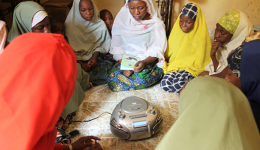Gender
Demand generation strategies must consider gender concerns when designing messages as gender affects access to information, health services and economic resources. Well-designed demand generation strategies will direct messages to clearly defined target audiences, considering the appropriate timing, location and call to action for each audience. Gender directly impacts where and when target audiences are exposed to messages, and how the audience is able to respond to the messages.

